Background
One of the most challenging issues in distribution centers is manually picking orders. The amount of lifting, bending, and reaching is obvious, but many of the techniques that are available for production areas (such as pallet lifts) are often not feasible because of a number of constraints.
Goods are usually stored in racking systems for efficient use of space. However, the racks restrict access and there is often limited clearance within the racks for employees to perform their duties.
It should be emphasized that the activities that involve the highest risk of a back or shoulder injury simultaneously are the most time consuming, i.e., reaching to the far side of a pallet to lift a load. Conversely, the loads that are in an optimal position for lifting are the most efficient ones for handling, i.e., loads easily accessed without bending or reaching. This “win-win” scenario ofter great prospects for continuous improvement.
Objectives
Minimize the number of manual transfers of loads. Minimize bending to floor level or reaching up to high levels with loads. Minimize forward reaching.
Issues and Options
Profiling: Green, Yellow, Red Zones
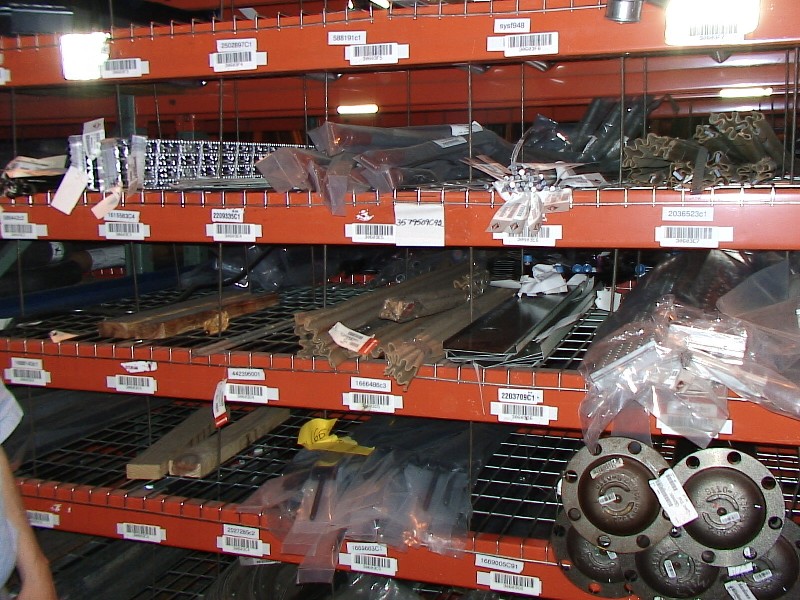 |
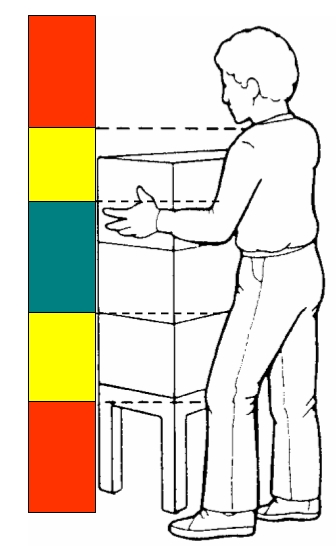 |
| Put heavy hitters in the green zone | |
The most valuable real estate in a warehouse for picking orders is the set of shelves at about waist height, i.e., the Green Zone. Put your heavy hitters here, either the most frequently ordered items or literally the heavy or otherwise hard-to-pick items. Infrequent or lightweight items belong in the yellow zone (and if no other choice, in the red zone).
The term “profiling” refers to the process of studying the quantities of items ordered and determining optimal location. Evaluation should include season or other related factors. For example, supermarket distribution centers put bags of charcoal in the easiest-to-access slots during the summer months.
Note that warehousing experts often use the term “Golden Zone” for what is here called the “Green Zone.”
Bay configuration
 |
 |
| Pallet on floor | Cross beam for lowest bay |
The bay at floor level is generally the most critical one, since it can be accessed on foot without need for a lift truck. Traditional racks provide for placing pallets directly on the floor, which then requires deeper bends to lift the lowest items. However, it is increasingly common to add a cross beam for the low bay. This simple technique raises the loads closer to the Green Zone without eliminating an excessive amount of vertical space.
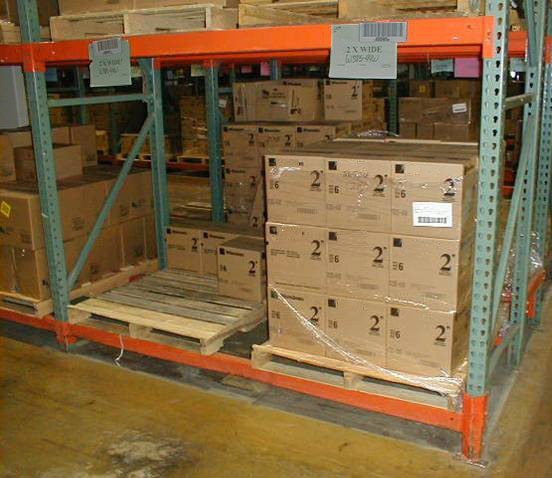 |
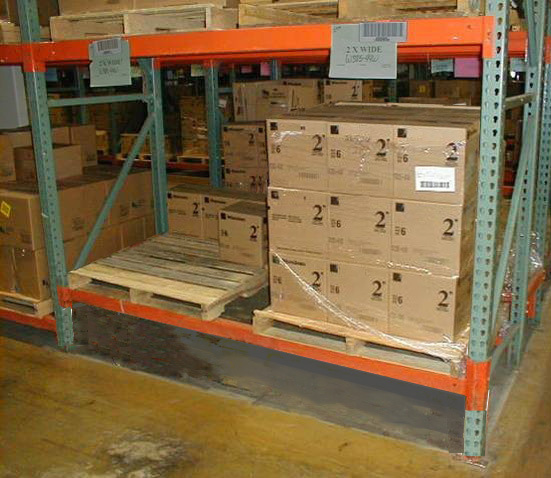 |
| Before | After |
Furthermore, if a full pallet of items does not reach the beam above, then the lower beam can be raised, again, to optimize picking height. A rule of thumb is that the vertical distance between beams should be set to provide just enough clearance to pick the top items in a stack.
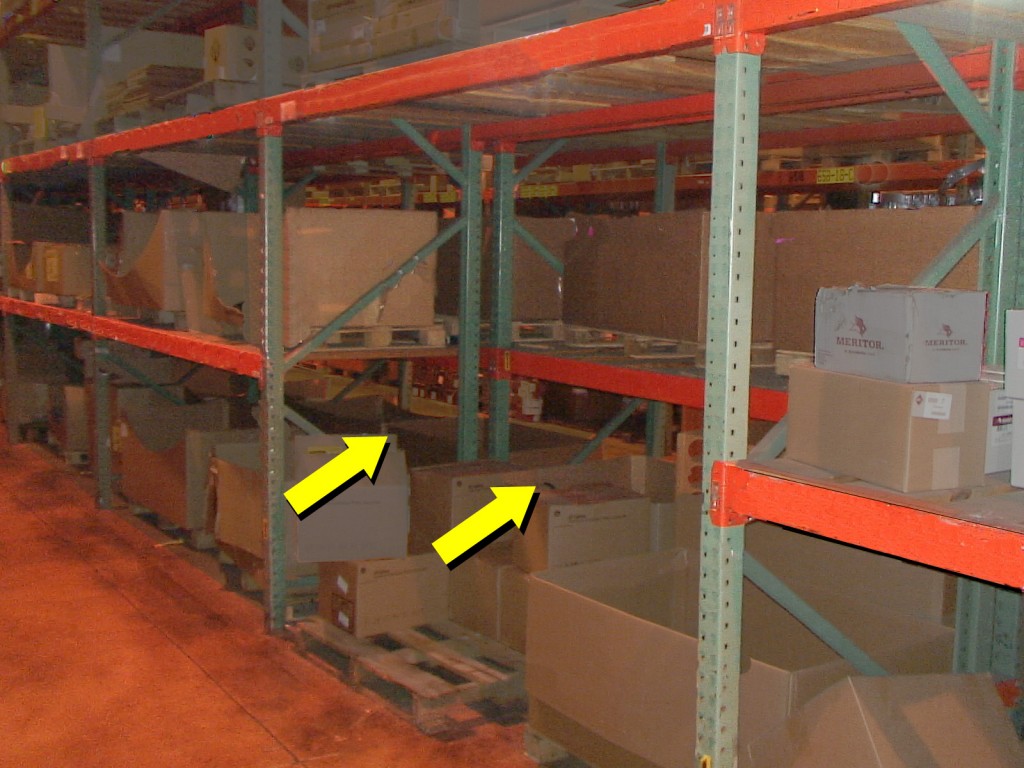 |
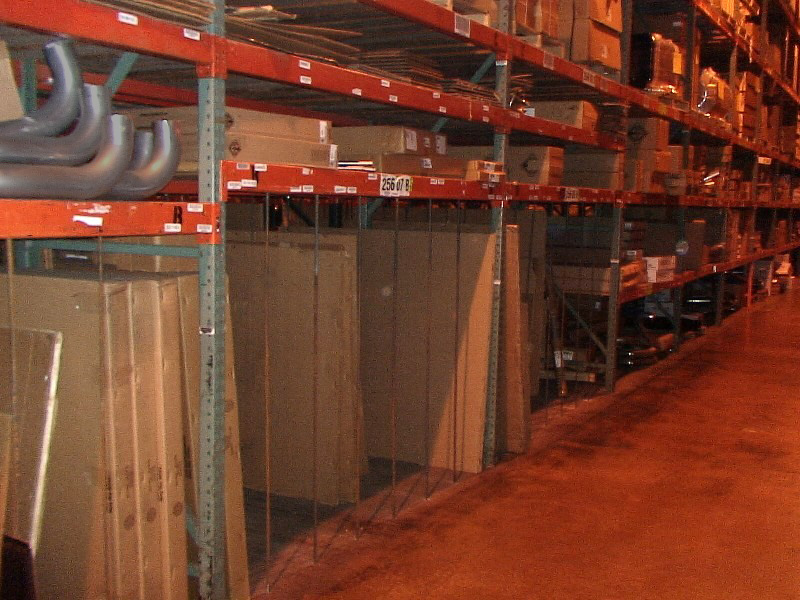 |
| Beam removed, better access | Highly customized, including vertical storage and dividers |
Individual bays can be configured in multiple other ways to improve the ability to pick orders:
- Remove middle level means for better access to hard-to-pick items
- Store thin items vertically, using vertical dividers in the bay
- Evaluate every bay for height, considering the type of item in that location.
If racks are all equal size and configuration, it often means that little or no attention to picking optimization after the racks were initially installed.
Shelf surfaces
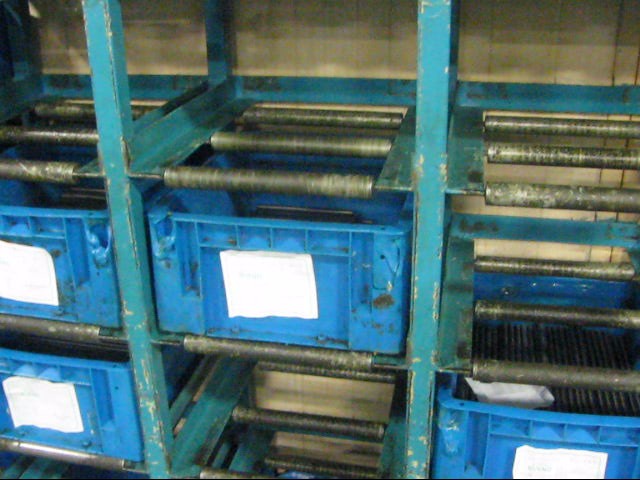 |
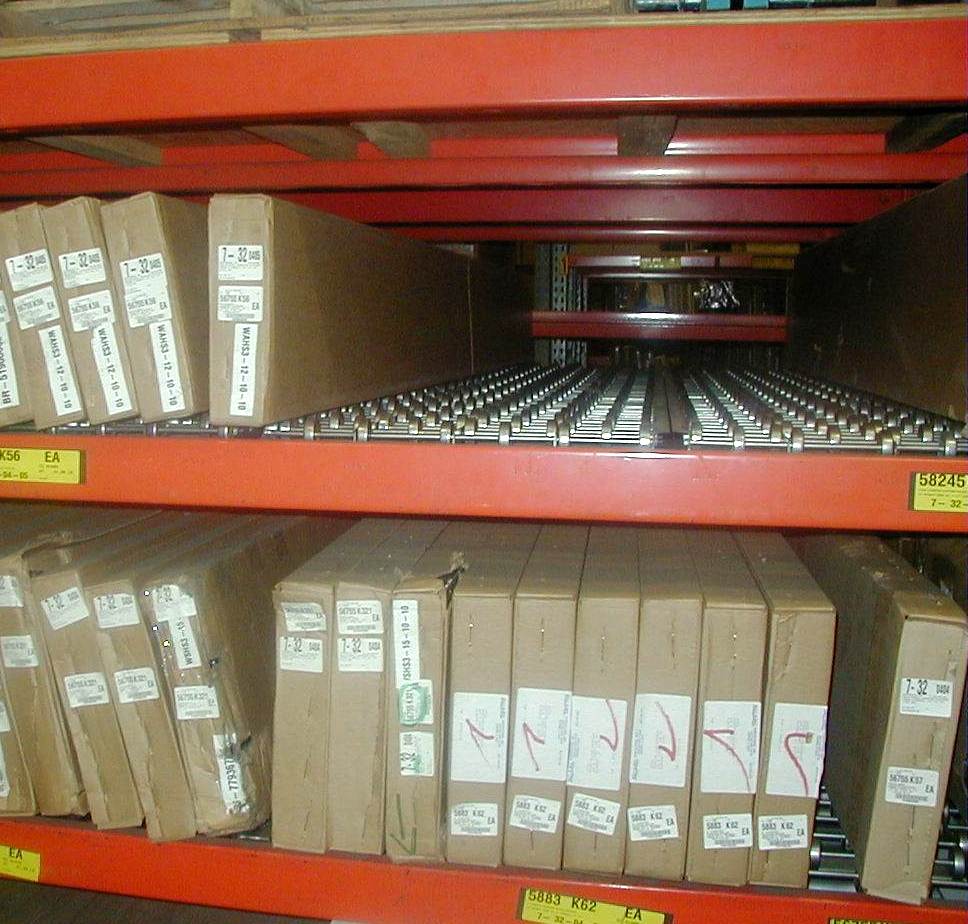 |
| Roller shelves | |
Some items can be difficult to pull from shelves. Options for improvement include slippery plastics or rollers.
Lifting assists
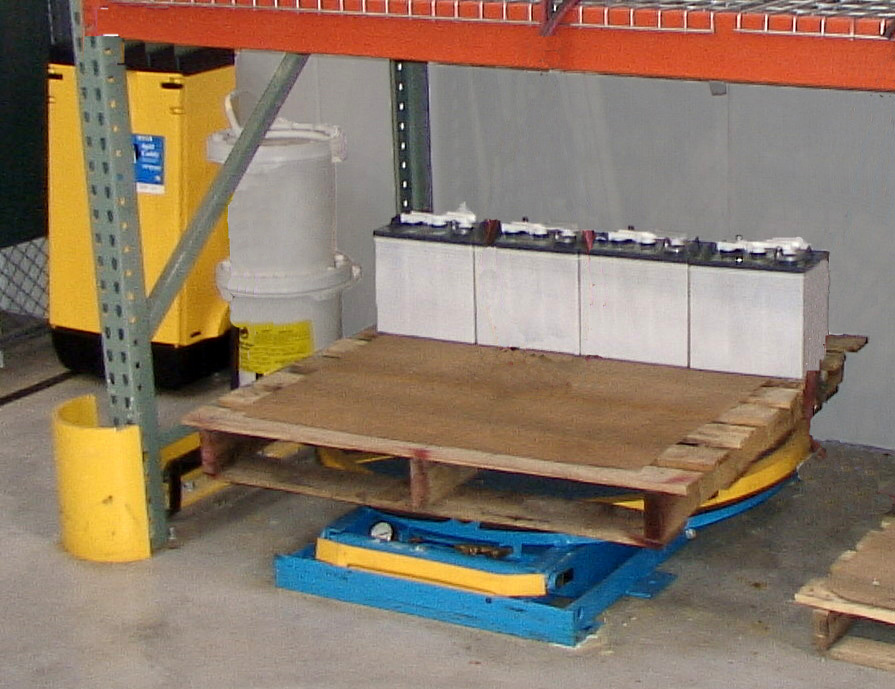 |
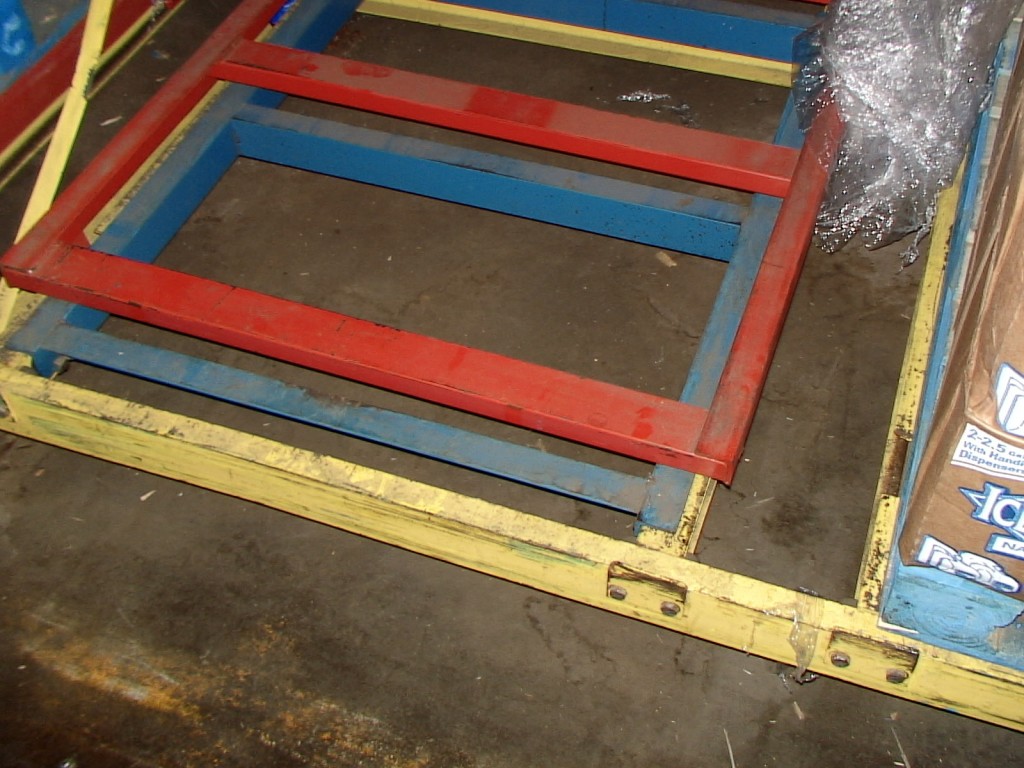 |
| Pallet lift with turntable for batteries | Sliding rack |
In some instances it is possible to integrate lifting assists in racks. The example above left shows a standard spring-loaded pallet lift and turntable used for heavy batteries. The ability to handle this particular type of product more efficiently justifies the extra space that is required. The example above right shows a sliding system built into a rack, which provides access to the far side of a pallet.
A related technique is to use a forklift truck to rotate pallets 180° when partially depleted, which positions the loads closer to the aisle for easier and more efficient handling. Under some circumstances, these benefits can justify the extra expense of rotating.
Alternatives to shelves
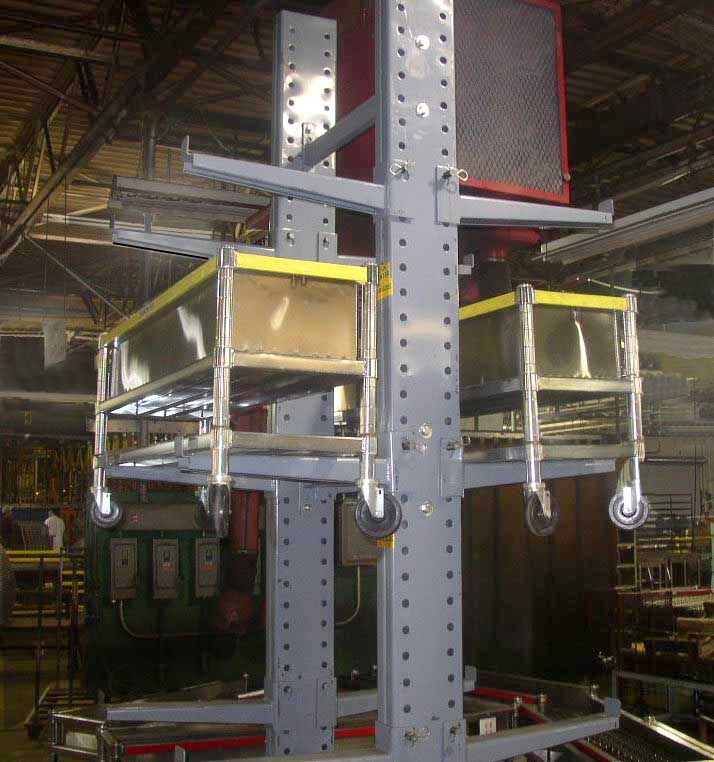 |
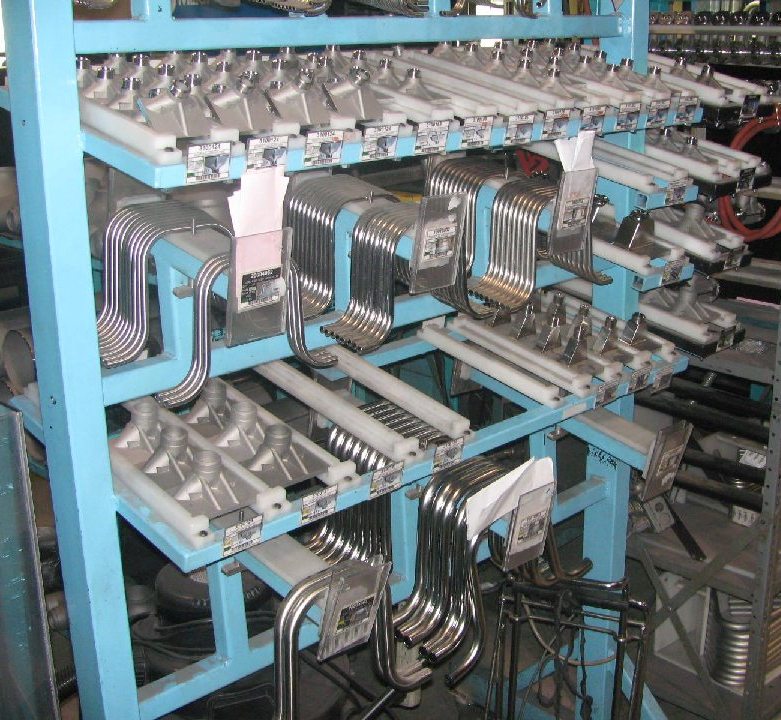 |
| Cantilever arms | Highly customized flow rack |
The shelving systems that are found in most storage racks do not always provide the most efficient approach for supporting items. It is important to routinely consider alternatives and not become habituated to the use of shelves. The examples above show cantilevered arms for storing loaded carts (left) and a flow through rack for components (right).
Morover, in some cases, it can be feasible to not place items in the rack, rather on the open floor. In such instances, the items are more accessible from all sides and standard lifting devices can more easily be used. The most common example is a heavy product that is in high demand.
Lift trucks
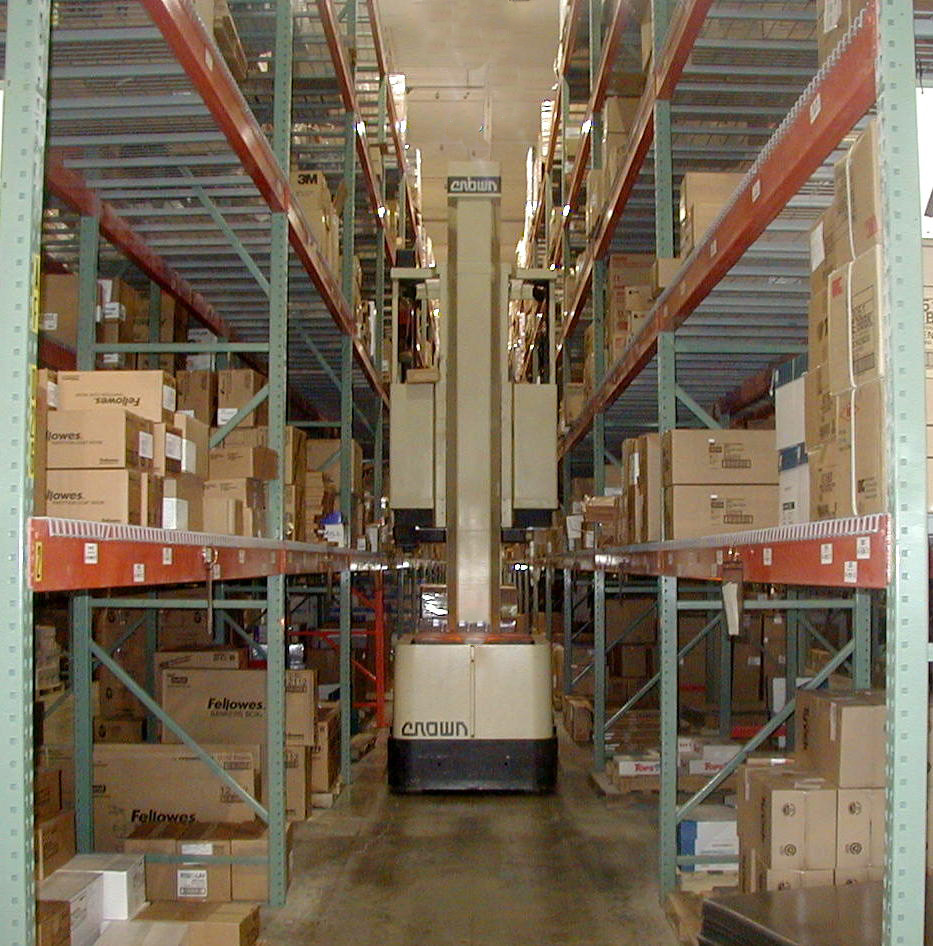 |
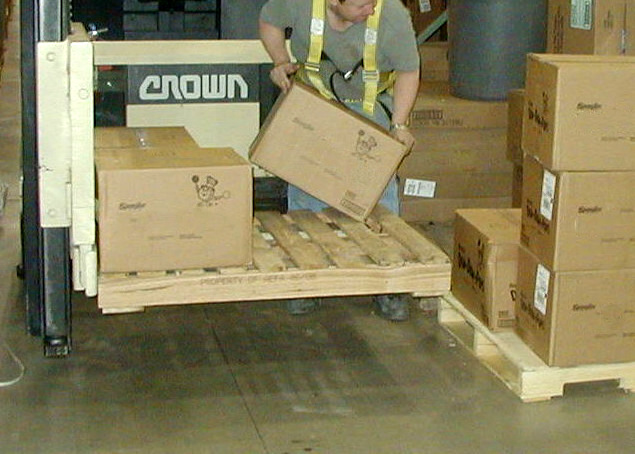 |
| Order picking lift truck | Forks raised to better height |
Lift trucks are commonly used to access upper bays. At floor level, the forks can be raised to hold pallets at a better height for picking.
Lift picking platforms
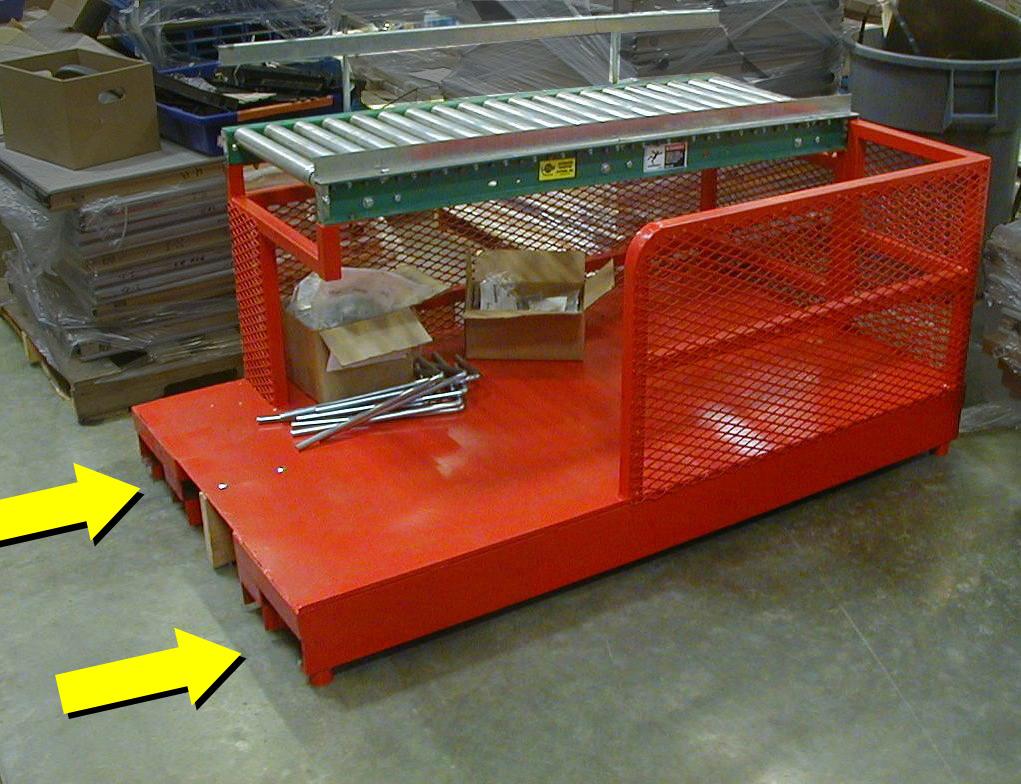 |
 |
| Lift picking stations | |
Many distribution centers have developed picking stations for use on lift trucks. The photo above left shows a station on the floor; note the built-in conveyor, the guard rails, and slots for the lift truck forks (arrows). The photo above right shows a plywood version in use at a high bay.
Pick carts
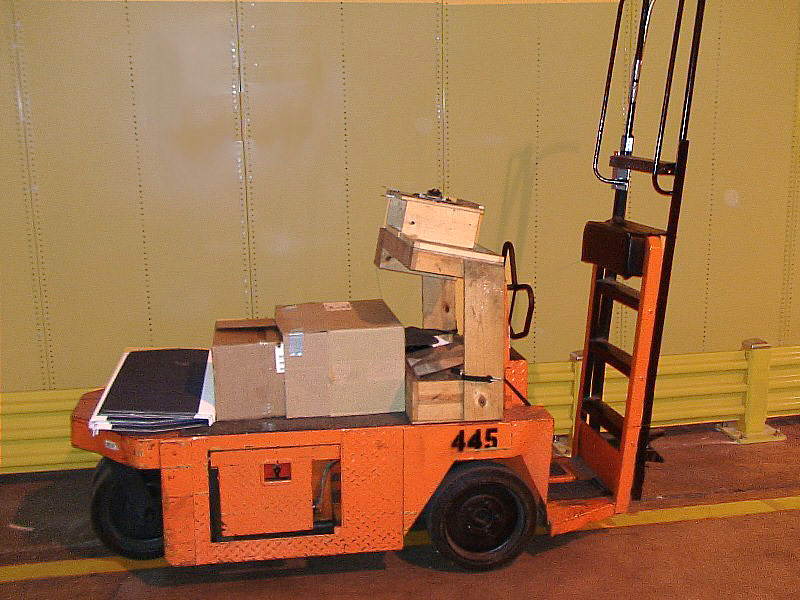 |
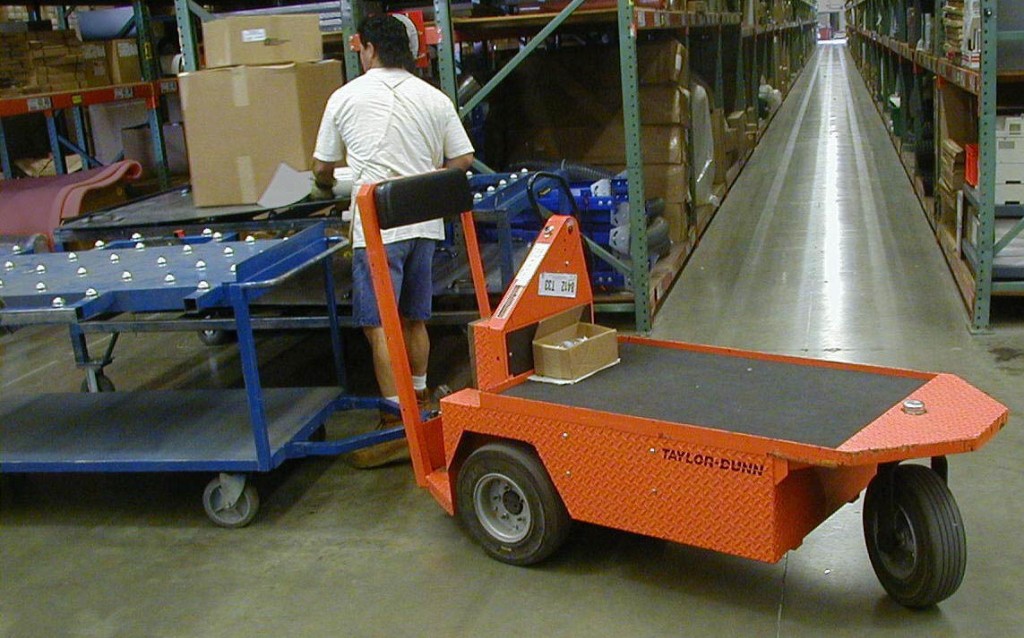 |
| Pick carts | |
A variety of carts are available picking orders on the floor level. The photo above left shows a powered riding cart with an integrated ladder, a knee-high storage surface, and a home-made console for paperwork. Above right is a similar powered unit towing a separate cart with ball rollers on a waist-high surface.
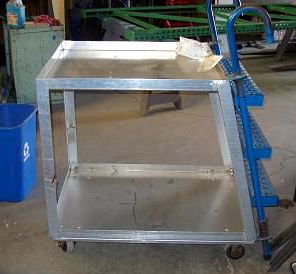 |
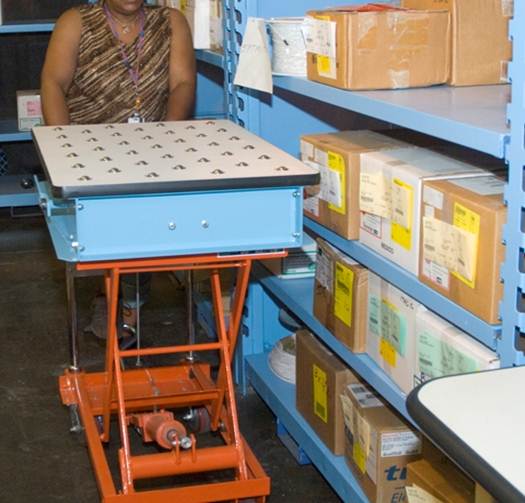 |
| Push cart with integrated ladder | Adjustable height cart |
A number of vendors provide carts thsat are especially designed for picking orders. Additionally, many styles of carts can be used, especially in bins.
Picking method
Sliding
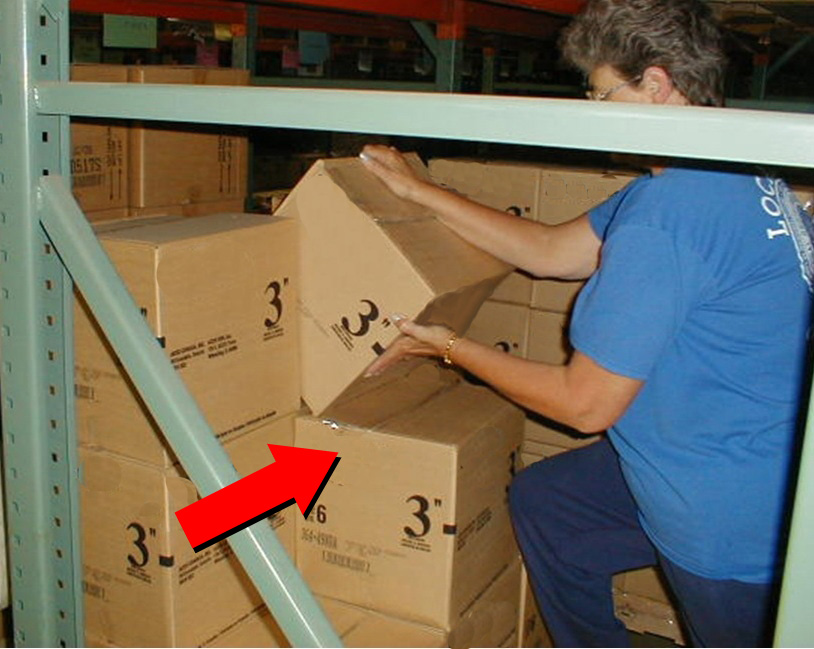 |
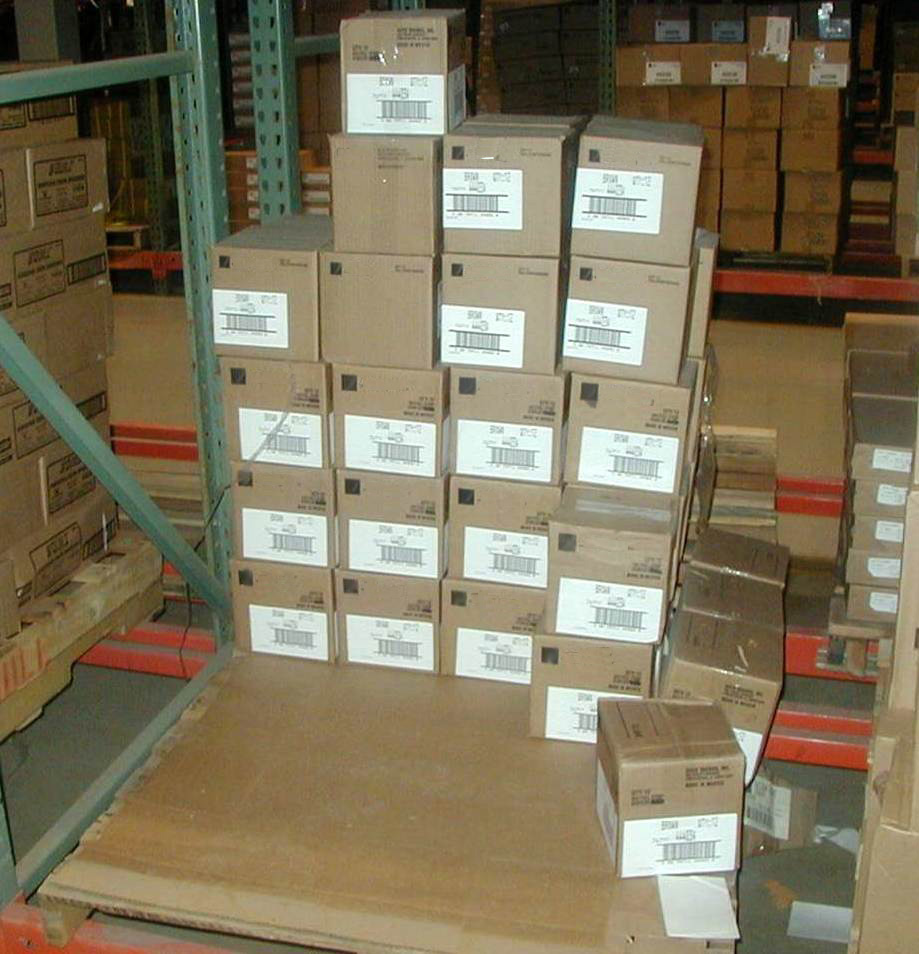 |
| Good: Slide the box | Poor: “Tower” |
A good picking method is remove boxes in a sequence that allows sliding the hardest-to-reach boxes, thus reducing the strain on the body when in an awkward position. This techniques is often called “picking in layers,” although it is more like a semi-pyramid. The point is to avoid creating a “tower” of remaining boxes, which eliminates the ability to slide one box on top of another, plus can create an unstable stack that can topple and damage the items in the box and/or hurt the employee.
Good supervision and habit-creation is vital, since there is a strong temptation to pick the closest box even though that makes the subsequent work more difficult.
Pulling hooks
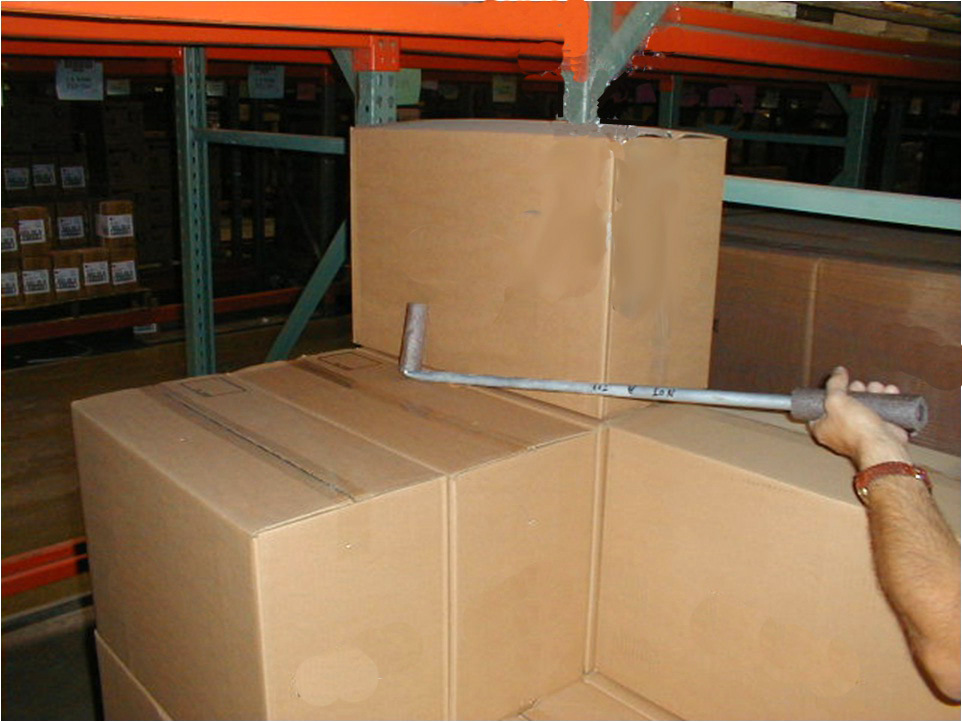 |
| Home made puller |
Some facilities have incorporated hooks into picking methods. Usually these hooks are homemade, plus require time for order pickers to get into the habit of using them.
